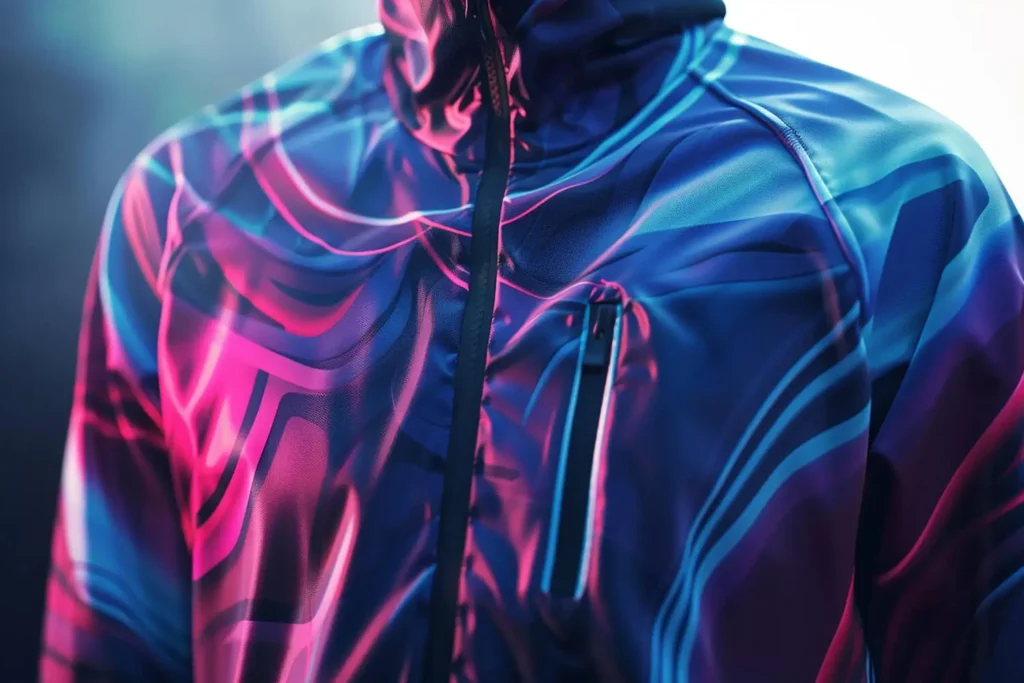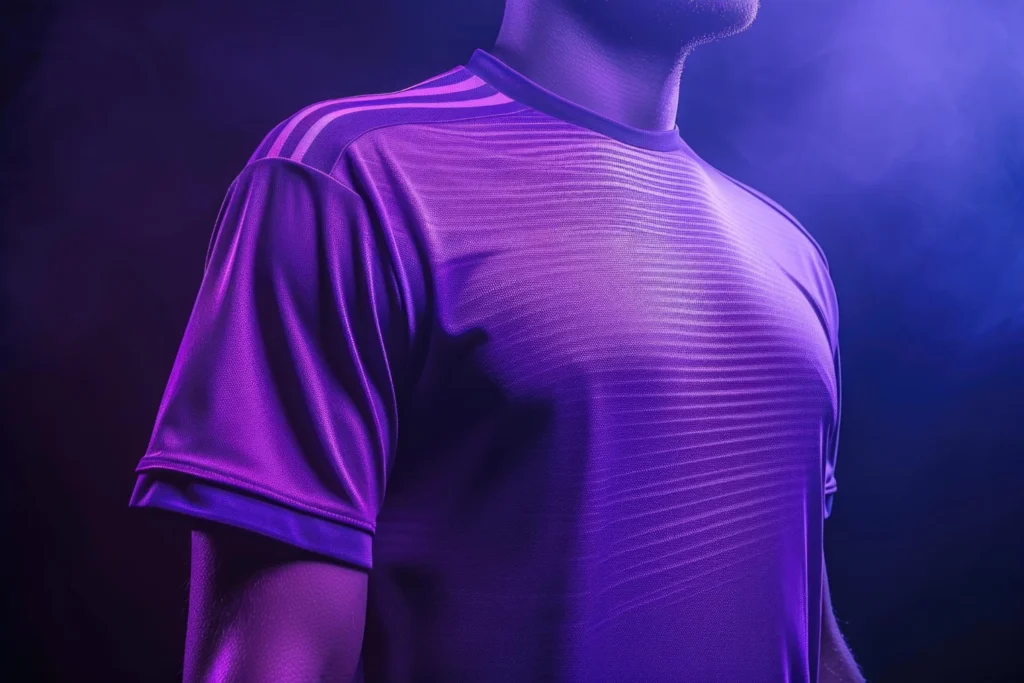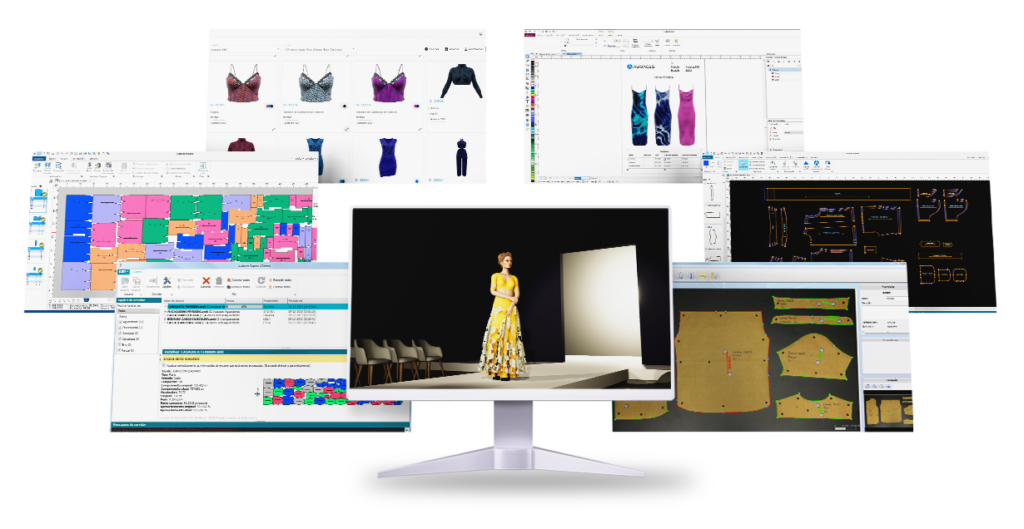Summary
- Advances in fashion have transformed textile production, offering a diverse array of fabric technology options.
- Investing in these innovations can transform your business, as clothing from these materials is gaining popularity among consumers.
- Whether you’re working with classic or tech textiles, our solutions are here to support you every step of the way. Try Audaces360 for free today!
Fashion designers are constantly on the lookout for the latest trends and innovations. It’s important to stay ahead of the curve when it comes to new textile developments.
One of the biggest trends in recent years has been the rise of fabric technology. Whether for sports, outdoor activities, or everyday wear, clothing from these materials is in high demand.
If you’re interested in using these materials in your collections, you’re in the right place. This article will introduce you to fabric technology, its different types, and the benefits it offers.
Enjoy your reading!
Sumário
What is fabric technology?
Fabric technology is the innovation in textile materials and manufacturing processes that enhance the performance and functionality of fabrics.
These advancements can range from the development of new fibers to the application of specialized treatments.
Viscose, for example, was once a groundbreaking innovation, created in a lab. It offered a more affordable alternative to natural fabrics, providing a similar look and feel. The process involved transforming plant-based cellulose into fibers.
Fast forward to the present, and viscose is now part of our daily lives. Meanwhile, today’s fabric technology has taken innovation to a whole new level.
They incorporate advanced engineering and new materials to deliver a wide range of performance features.
Learn more: Complete guide to fabric creation for your apparel business
How does fabric technology work?
By modifying fibers or applying specialized treatments, fabric technology can create textiles with unique properties. Researchers can tailor these materials to meet a wide range of needs.
Sportswear is a prime example of how technology has reshaped the textile industry. Performance fabrics significantly impact athletes’ abilities.
They offer a perfect fit, enhancing flexibility and wicking away sweat. Some even include smart features like heart rate monitoring. However, performance fabrics benefit more than just elite competitors.
Everyday athletes can also take advantage of the comfort and functionality of these materials.
Learn more: 9 fabrics with the perfect fit to use in your fashion collection
Examples of fabric technology and their application in fashion

Let’s explore the different types of performance fabrics and their applications:
Waterproof fabric
These materials have the ability to repel water, making them ideal for outdoor activities and harsh weather conditions.
Waterproofing treatments can range from chemical coatings to laminated layers. They are perfect for raincoats, jackets, and footwear.
Furthermore, waterproof fabrics have applications beyond apparel. You can find them in a wide range of products, including camping tents, sofa covers, and tablecloths. The water-resistant property makes them highly versatile.
Due to their durable nature, waterproof fabrics require a design approach that complements their robustness. Consider the sturdy characteristics of these materials when creating your products.
As examples, we can mention PU-coated fabrics and Gore-Tex, known for their durability and performance
Learn more: 5 benefits of simulating fabric texture digitally
Antibacterial fabric
As the name suggests, they inhibit the growth of bacteria. This feature is particularly important in clothing that comes into direct contact with the skin like sportswear and undergarments.
These fabrics are also the choice for home textiles, such as bed sheets and towels. They are useful in industries such as healthcare and food service where hygiene is paramount.
Furthermore, these fabrics are ideal for sportswear and socks, as they help to prevent the growth of odor-causing bacteria. This way they promote a more comfortable and hygienic workout experience.
Certain fibers, like bamboo and tea-leaf, possess inherent antibacterial qualities. These fabrics often feel very soft, offering different design opportunities. You can even leverage the sustainable narrative associated with these materials in your marketing.
Learn more: Discover how sustainable design can delight your customers
Antimicrobial fabric
It’s very similar to antibacterial fabric. However, this type of property also inhibits the growth of microorganisms such as fungi and viruses.
This property makes them particularly useful in applications where hygiene and infection control are important. As a result, they gained significant popularity during the COVID-19 pandemic.
In addition to promoting better hygiene, there’s another significant advantage. Some antimicrobial treatments can enhance the fabric’s durability and resistance to stains and help combat odors.
You can use this fabric in clothing for baby clothes, who need extra care during their first few months of life.
Ready to dive into the world of fabrics? From classic textiles to technological innovations, our e-book has it all. Download now and find the ideal materials for your next collection!
Sun protection fabric
Its main goal is to protect the skin from the harmful effects of ultraviolet radiation from the sun.
This type of fabric is important for health reasons, as it helps prevent sunburn, premature aging, and skin cancer.
Originally, these fabrics were thick and primarily used for surf wear. However, thanks to technological advancements, a wide variety of fabrics are now available in different weights, colors, and patterns.
As a result, they’ve become increasingly popular for swimwear and outdoor activities.
Learn more: How to set up a profitable online swimwear store
Insect repellent fabric
Insect repellent fabrics are textiles treated with substances that repel insects like mosquitoes, ticks, and flies. They offer protection from bites, especially in areas with high insect populations.
These fabrics are ideal for travel to regions with a risk of insect-borne diseases. The materials are also great for both children’s clothing and adults engaging in outdoor activities like hiking or fishing.
To maximize protection, consider designs featuring long sleeves and full-length pants that offer both comfort and flexibility.
Heart rate monitoring fabric
It’s an innovative textile technology that integrates sensors within the fabric itself to track and monitor heart rate.
They connect to a Bluetooth device or another form of wireless communication to transmit the data to a smartphone.
This type of fabric is ideal for producing “smart clothing”. They provide real-time biometric data to the wearer, particularly useful in health monitoring and sports applications.
Unlike traditional heart monitors, like chest straps or wristbands, it’s more comfortable and less intrusive for the wearer.
Benefits of using fabric technology in fashion design

Quick drying
One of the key benefits of fabric technology is the development of quick-drying materials. These fabrics wick moisture away from the body, allowing it to evaporate rapidly.
It’s particularly valuable in activewear and outdoor clothing, where staying dry can enhance comfort and performance.
As a result, wearers can enjoy hours of comfort without experiencing sweat or unpleasant odors. Additionally, these fabrics dry quickly, making them convenient to wash and wear.
Learn more: How can fashion brands boost their business with technology?
Longer lifespan
Fabric technology also contributes to the longer lifespan of garments. By using durable fibers and treatments that resist wear and tear. They maintain quality and appearance even with frequent use and washing.
This means the fabric is more colorfast, resisting fading over time. It also holds its shape and fit well, unlike delicate fabrics that tend to lose their form.
Sustainable textile manufacturing
Sustainability is a growing concern in the fashion industry, and fabric technology plays a crucial role in addressing it.
Advances in textile manufacturing led to the development of eco-friendly fabrics with recycled materials and organic fibers. They require less water, energy, and chemicals to produce.
Furthermore, innovative processes minimize waste and reduce the environmental impact of dyeing and finishing.
Remember that more and more consumers are choosing products based on how eco-friendly they are. By choosing sustainable fabrics, designers can meet this demand and contribute to a more responsible and eco-conscious industry.
Learn more: 8 sustainability trends in the textile industry
Create your next collection with fabric technology in Audaces360

Audaces360 offers solutions that enable fashion designers to create not only flat sketches but also 3D models. Both with exceptional detail and information accuracy.
Additionally, it provides advantages such as spec sheets and automatic real-time pre-costing integrated with the design. This is essential when working with fabric technology due to its higher costs.
We offer comprehensive solutions for you to create precise designs that maximize material usage and minimize waste. You can estimate costs from the initial design stage, allowing you to adapt the garment for optimal cost-efficiency.
Among the benefits for your daily work are:
- Design with precision using 2D vector tools with spec sheets and pre-costs.
- Create, visualize, and refine your designs on a 3D mannequin.
- Leverage AI technology to enhance your process and results.
- Manage your collection end-to-end from the palm of your hand.
All seamlessly integrated with pattern-making and production solutions, offering a comprehensive platform for the entire business.
Interested in learning more? Discover Audaces360 and explore our comprehensive suite of solutions for fashion design.
FAQ
Fabric technology is the innovation in textile materials and manufacturing processes that enhance the performance and functionality of fabrics.
By modifying fibers or applying specialized treatments, fabric technology can create textiles with unique properties. Researchers can tailor these materials to meet a wide range of needs.
Waterproof, antibacterial, antimicrobial, sun protection, insect repellent, and heart rate monitoring fabrics.










